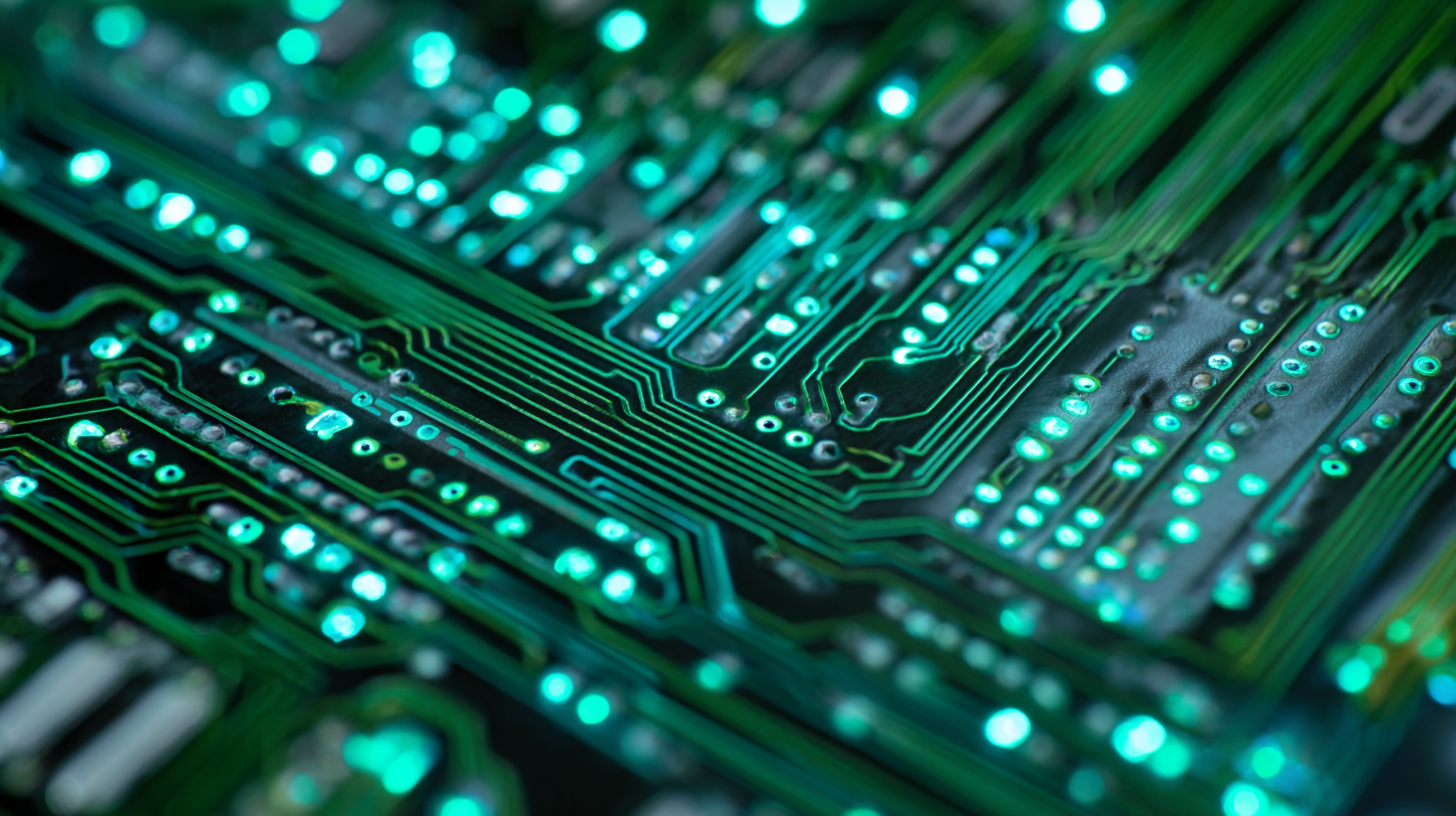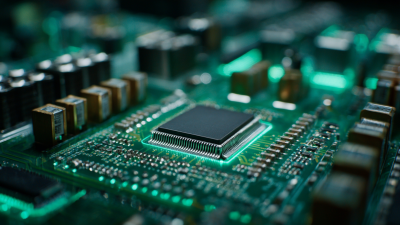Exploring the Future of Electronics: How Flexible Printed Circuit Boards Will Revolutionize device Design in 2024
As we delve into the transformative landscape of electronics in 2024, the emergence of flexible printed circuit boards (FPCBs) is set to redefine device design across various industries. According to a recent report by MarketsandMarkets, the global flexible printed circuit board market is projected to reach USD 27.09 billion by 2026, growing at a CAGR of 10.6% from 2021. This surge in demand is driven by the increasing adoption of compact and lightweight devices in consumer electronics, automotive technology, and wearable gadgets. The versatility of FPCBs allows for innovative designs that not only enhance functionality but also facilitate the integration of advanced features in devices. As we explore the future of electronics, understanding the pivotal role of flexible printed circuit boards becomes essential in predicting industry trends and shaping next-generation product development.

The Benefits of Flexible Printed Circuit Boards in Modern Electronics Design
Flexible Printed Circuit Boards (FPCBs) are set to transform modern electronics design by offering a multitude of benefits that cater to the evolving needs of various industries. One of the key advantages of FPCBs is their ability to save space. Unlike traditional rigid circuit boards, flexible boards can be bent and shaped to fit into compact and intricate designs, allowing for more innovative product features without sacrificing performance. This flexibility not only enhances the aesthetic appeal of devices but also enables manufacturers to create lighter and more portable products.
When integrating FPCBs into your designs, consider the following tips: First, work closely with engineers who specialize in flexible electronics to gain insights into material selection and circuit layout. This collaboration can help maximize the efficiency and reliability of your product. Secondly, conduct thorough testing during the prototyping phase to identify potential issues such as stress points that could lead to failure. Addressing such challenges early in the design process can significantly improve the final outcome.
Furthermore, the durability of FPCBs in harsh environments is another crucial benefit, making them ideal for use in automotive and medical devices. Their resistance to vibration and temperature fluctuations ensures that electronic components remain operational under challenging conditions, thereby enhancing the overall reliability and lifespan of the devices. As we move into 2024, embracing FPCBs will undoubtedly shape the future of electronics design, paving the way for smarter, more efficient products.
Benefits of Flexible Printed Circuit Boards in Modern Electronics Design (2024)
Key Trends in Flexible PCB Technology for Enhanced Device Functionality and Performance
The landscape of electronics manufacturing is rapidly evolving with the rise of flexible printed circuit boards (PCBs). In 2024 alone, the rigid flex PCB market in China is projected to reach USD 3.62 billion, growing at a remarkable CAGR of 12.4%. This growth is indicative of the increasing integration of flexible PCBs in advanced applications, enhancing device functionality and performance. Key trends such as the integration of bio-microsystem technologies and lab-on-PCB innovations are paving the way for novel solutions in medical and environmental fields.
Moreover, the ultra-thin flexible PCB market is also witnessing robust development, with a CAGR of 11.20%. These advancements allow for more compact and efficient device designs, catering to the demand for lighter and more versatile electronics. As the substrate-like PCB market is estimated to reach USD 8.9 billion by 2034, it’s clear that companies focused on innovation are reaping the benefits of flexible designs.
Tip: Stay abreast of emerging technologies and actively explore partnerships with startups in the PCB ecosystem to leverage new capabilities and stay competitive. Another recommendation is to invest in PCB vision inspection equipment, projected to grow to USD 1.43 billion by 2035, ensuring quality and reliability in your manufacturing processes.

How Flexible PCBs Are Enabling Next-Generation Wearable Tech and IoT Devices
The advent of flexible printed circuit boards (PCBs) is set to transform the landscape of wearable technology and Internet of Things (IoT) devices in remarkable ways. Unlike traditional rigid circuits, flexible PCBs can bend and conform to various shapes, making them ideal for applications in compact and intricate designs. This adaptability not only allows manufacturers to create sleeker and more ergonomic devices but also contributes to enhanced functionality, as these circuits can be integrated into clothing or accessories without compromising performance.
With the rise of health monitoring wearables, flexible PCBs play a crucial role in enabling sophisticated sensors that can track vital signs more accurately and comfortably. For example, heart rate monitors embedded in sportswear can provide real-time data without physical discomfort. In the realm of IoT, flexible PCBs facilitate the development of smaller, more efficient devices that can be seamlessly incorporated into everyday objects, creating smarter environments. This innovation will usher in an era where devices are not only more interactive but also more attuned to users' needs, paving the way for a future where connectivity is truly omnipresent.
Cost-Effectiveness of Flexible PCBs: Analyzing Manufacturing and Material Savings
The rise of flexible printed circuit boards (FPCBs) is set to transform the landscape of electronic device design, particularly in terms of cost-effectiveness. Recent market reports indicate that flexible PCBs can reduce manufacturing costs by up to 25% compared to traditional rigid circuits, primarily due to savings on materials and assembly processes. This significant reduction is attributed to the lightweight and adaptable nature of FPCBs, which allows for more efficient use of space and materials, thus minimizing waste during production.
In addition, the durability and flexibility of FPCBs lead to lower long-term costs. According to a report by IDC, the failure rate of devices utilizing flexible PCBs is approximately 15% lower than those using rigid boards, resulting in fewer replacements and repairs. As manufacturers seek to optimize their production lines and enhance overall product reliability, the shift toward flexible PCBs presents an economically viable solution. Moreover, the ability to integrate complex functionalities into a single flexible substrate is poised to further drive down costs, making advanced electronics more affordable and accessible to consumers in 2024 and beyond.
Future Challenges and Innovations in the Flexible PCB Market by 2024
The flexible printed circuit boards (FPCBs) market is poised for transformative innovations by 2024, addressing several challenges that have historically hindered their adoption. One prominent challenge is the need for enhanced durability. Manufacturers are actively exploring new materials and coatings that can withstand extreme conditions such as high temperatures and mechanical stress, ensuring that FPCBs can meet the rigorous demands of modern electronic devices. Innovations in materials science will likely drive this evolution, allowing for more robust designs without sacrificing flexibility.
Another significant challenge in the flexible PCB market is achieving higher integration and miniaturization in device design. As electronics become increasingly compact, FPCBs must offer superior functionality while maintaining their lightweight and flexible characteristics. This necessitates cutting-edge advancements in manufacturing techniques, such as the development of ultra-thin substrates and novel layering methods. By overcoming these obstacles, the industry can unlock new applications in sectors ranging from wearables to automotive, ultimately leading to smarter and more efficient devices that redefine user experiences.

Related Posts
-

Unlocking Innovation: The Future of Circuit Board Design in 2024 and Beyond
-

Understanding the Importance of Flexible Printed Circuits in Modern Electronics
-

Understanding the Latest Innovations in PCB Manufacturing for Modern Electronics
-

Unlocking the Future of Circuit Board Production with Sustainable Practices and Advanced Technologies
-

Revolutionizing Circuit Board Manufacturing: Innovative Techniques for Efficient Production
-

The Future of PCB Manufacturing Innovations Transforming Electronics Industries
